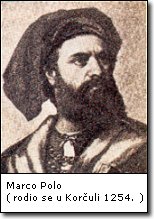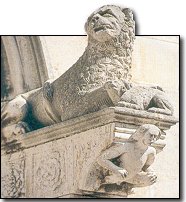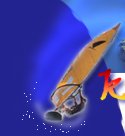|
|

++ A b o u t K o r č u l a >> h i s t o r y
 The island of Korcula was inhabited in pre-history and traces of ancient life were discovered in many places. The oldest are finds of Neolithic stone knives on the islet of Badija near Korcula. The Neolithic site of Vela špilja (Great Cave) in Vela Luka is the richest and best researched. Several strata of pre-historic life were explored here with fire places, pottery shards and graves (from 5000-3000 B.C.). Many Neolithic tumuli, cult sites and graves are scattered over the whole island. In the 6th century B.C. the Greeks settled the island, first near Vela Luka, and named the island Corcyra Melaina (Black Korčula). Somewhat later Greeks from the island of Vis (Issa) settled the other end of the island, the area of today's Lumbarda, where they founded an important settlement mentioned in a 3th century B.C. inscription (Psephysm) discovered at the end of the 19th century. Greek graves from that period were found in Lumbarda with contributions of gnathia vases. It is certain that systematic archaeological excavations would reveal not only a complete Greek necropolis, but other traces of their settlement, as well.
The island of Korcula was inhabited in pre-history and traces of ancient life were discovered in many places. The oldest are finds of Neolithic stone knives on the islet of Badija near Korcula. The Neolithic site of Vela špilja (Great Cave) in Vela Luka is the richest and best researched. Several strata of pre-historic life were explored here with fire places, pottery shards and graves (from 5000-3000 B.C.). Many Neolithic tumuli, cult sites and graves are scattered over the whole island. In the 6th century B.C. the Greeks settled the island, first near Vela Luka, and named the island Corcyra Melaina (Black Korčula). Somewhat later Greeks from the island of Vis (Issa) settled the other end of the island, the area of today's Lumbarda, where they founded an important settlement mentioned in a 3th century B.C. inscription (Psephysm) discovered at the end of the 19th century. Greek graves from that period were found in Lumbarda with contributions of gnathia vases. It is certain that systematic archaeological excavations would reveal not only a complete Greek necropolis, but other traces of their settlement, as well.
In the 1st century A.D. the Romans conquered the island and the whole of Dalmatia, and called the region Illyricum. In the 7th century the Slavs-Croats came to the Adriatic coast and soon founded their own state, which was first a principality, and after 925, when the first King Tomislav was crowned, a kingdom. Korčula was part of that state. Fleeing from the onslaught of the Slavs the Roman population of Salona (today's Solin near Split) came to the islands of Brač, Hvar and Korčula. After things died down most of them returned to their old habitation, and the rest were assimilated by the native population.
In 1000 Peter II Orseolo, Doge of Venice, conquered the Dalmatian towns and islands, and Korčula came under the Venetians. It was here, on the nearby islet of Majsan, that the Doge struck camp as he conducted his campaign against Korčula and Lastovo, which resisted in vain.
After that Korčula often changed masters: Venice was replaced by the counts of Hum, kings of Croatin-Hungary, Venice again, from 1413-1420 the Dubrovnik Republic, from 1420-1797 Venice. When Napoleon overthrew the Venetian Republic, Dalmatia was for a short time ruled by Austria, but soon the French came.

In the 1804-1805 period Korčula changed French and Russian masters, from 1807-1813 the French ruled, then the English until 1815 when the Vienna Congress mapped new European borders. Dalmatia came under Austrian administration that lasted until the end of the First World War (1918), but it was not joined to the newly-formed Kingdom of Serbs, Croats and Slovenes, later Yugoslavia, until 1921. After multi-party elections in 1990, the population of Croatia opted at a referendum to leave Yugoslavia and an independent state, the Republic of Croatia, was proclaimed.
barda, where they founded an important settlement mentioned in a 3' century B.C. inscription (Psephysm) discovered at the end of the 19' century. Greek graves from that period were found in Lumbarda with contributions of gnathia vases. It is certain that systematic archaeological excavations would reveal not only a complete Greek necropolis, but other traces of their settlement, as well.
In the 1st century A.D. the Romans conquered the island and the whole of Dalmatia, and called the region II-lyricum. In the 7' century the Slavs-Croats came to the Adriatic coast and soon founded their own state, which was first a principality, and after 925, when the first King Tomislav was crowned, a kingdom. Korcula was part
|
|
 |
|


